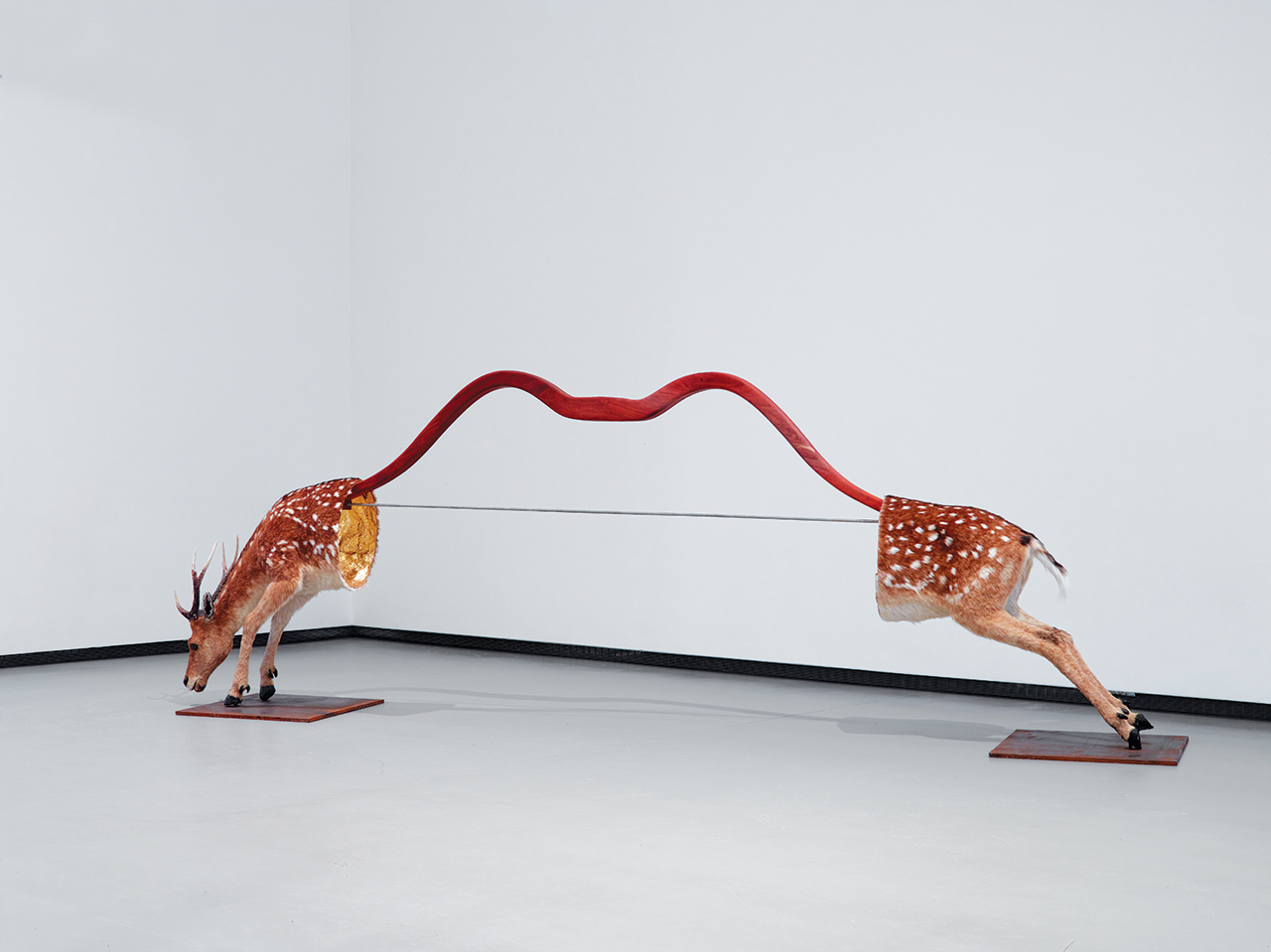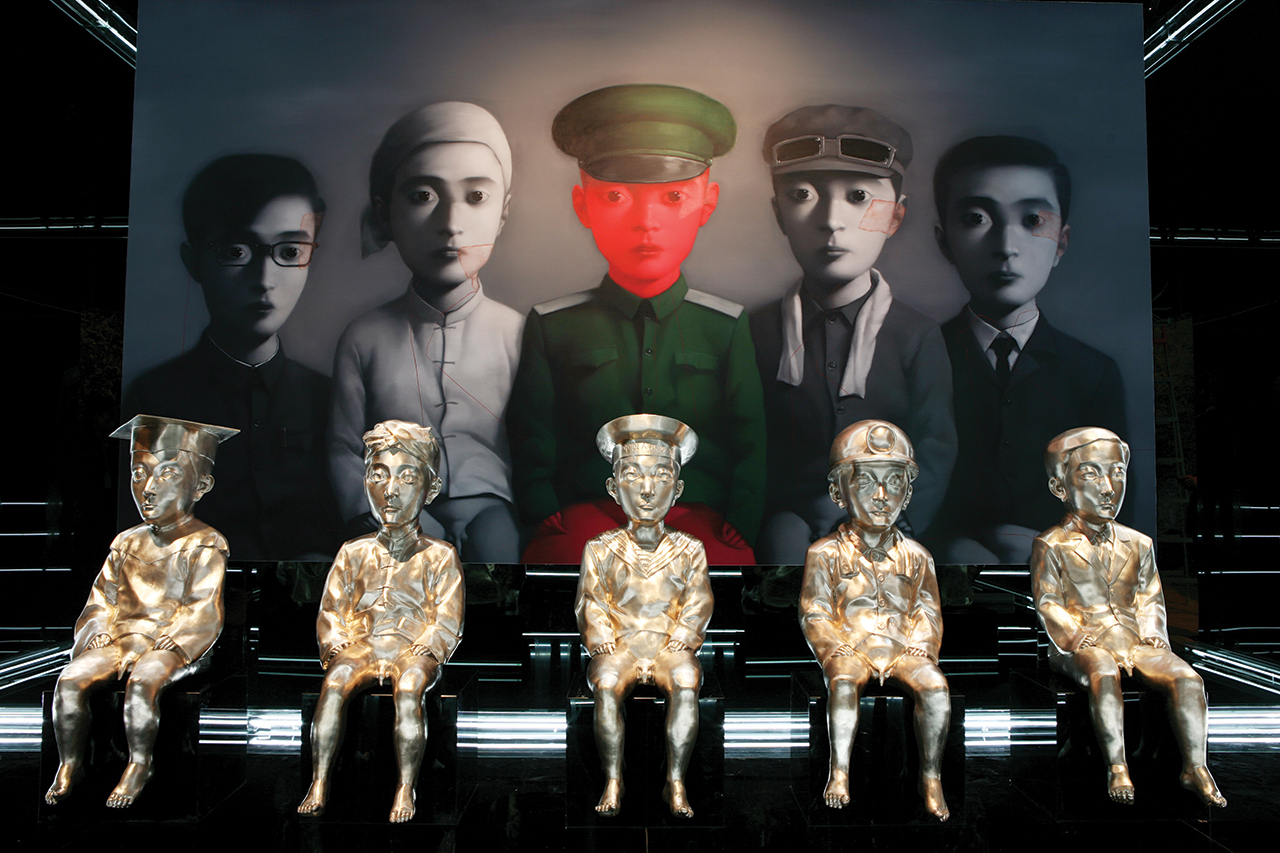Fondation Louis Vuitton Takes a Disruptive Approach to Contemporary Chinese Art
Feb 29, 2016

Just when it seems the temperature is cooling around contemporary Chinese art, along come two heavyweights, with differing views on the matter. In Bentu, Chinese Artists at a Time of Turbulence and Transformation, at Fondation Louis Vuitton in Paris, and at the 10th instalment of Four Decades of Chinese Contemporary Art with the M+ Sigg Collection in Hong Kong, there are two exhibitions that share many of the same artists but have entirely differing intents.
Where Four Decades aims to trace and illustrate the robust output of Chinese art through historical artistic movements from the late 1970s to the present day, Bentu begs to differ, or more actively, to disrupt. Four Decades presents a linear and chronological narrative of the development of Chinese contemporary art, whereas the Parisian showing, the first exhibition devoted to contemporary Chinese art in France in the last decade, also co-organised with the Ullens Center for Contemporary Art of Beijing (UCCA Beijing), appears to pro-offer the notion that Chinese contemporary art doesn’t follow any stylistic movements.
It’s an interesting stance, but harder to grasp what the intention might be. It’s clever and covers all the bases as a strategy. As such, Bentu shows the works of 12 mainland China-based artists of different generations who use a wide variety of techniques and media, drawn from both local tradition and culture, as well as newer cutting-edge technologies thereby revealing the complexities of a society that is in permanent mutation. Economy and ecology, the transformation of the relationship between the city and the countryside are at the heart of the exhibit.

According to Fondation Louis Vuitton, “the choice of works does not seek to show a panorama of the artistic scene in China, but aims to draw attention to the multiform character of the cultural production in the country, which undergoes rapid development and which affirms itself through outstanding individuals, rather than specific movements.” All well and good, but a fact shared by artists and their artistic production anywhere in the world.
Perhaps more than anything, Bentu represents an “identity crisis” of sorts, experienced by any generation going through such rapid and dislocated change in a local and global context simultaneously. Chinese-ness or Chinese-less would seem central to the debate, or the issue of how much younger practitioners like Beijing-based video artist Cao Fei – the only woman in the group and reminder that the Fondation might also have benefited from the selection of someone such as Ma Quisha – want to be specifically identified as “Chinese” on the art world’s stage.
The language of the works is revealing too. Titles ranging from Liu Wei’s Purple Air, Hu Xiangquian’s The Woman in Front of the Camera and Speech at the Edge of the World, to Cao Fei’s Strangers, Liu Shiyuan’s From Happiness to Whatever and Xu Qu’s Currency Wars, provide an explicit chapter by chapter blow of contemporary Chinese concerns or the pervading sense of cultural anxiety.

Simultaneous to Bentu, the Fondation is also running a hang of work from its own collection, designed to complement the temporary exhibition, featuring the work of leading exponents such as Ai Weiwei’s Tree installation, Zhang Xiaogang’s My Ideal, Zhang Huan’s monumental Long Island Buddha, Huang Yong Ping’s snappiest L’Arc de Saint-Gilles and the highly watchable video and filmmakers Yang Fudong, with his glossy magazin-ey The Coloured Sky: New Women II, and Cao Fei’s celebrated animated video work RMB City Second Life planning, which combines old-world tradition with new-world pop.
By exhibits’ end we’re blown away. Not by a want to compartmentalise but by the vibrancy of contemporary Chinese art’s offerings, its artists’ versatility – the media is the medium to create more media and they’re all multidisciplinarians at it – and via the likes of Xu Zhen, their ability to appropriate from Renaissance past to an e-naissant future. With a Fondation like this, these are disruptive, dynamic and tantalant times for Chinese artists.





























